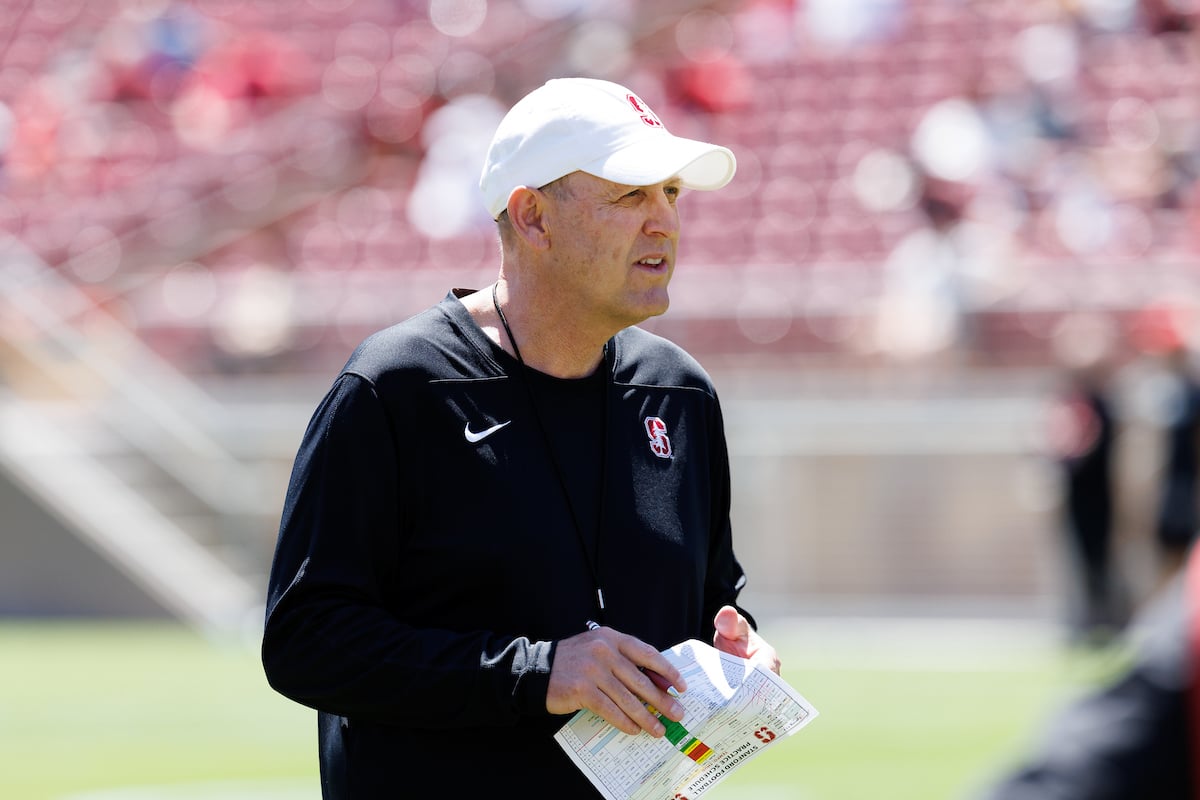Stanford head football coach Troy Taylor held his weekly press conference on Monday, ahead of the Cardinal’s season-opening game against the TCU Horned Frogs on Friday.
Starting quarterback position up in the air
Taylor did not disclose the starting quarterback for the season-opener against TCU, saying that he wants to play things close to the vest.
“I don’t think I want to reveal my card right now, but I’ll just say this: we feel great about all three of those guys,” Taylor said, referring to quarterbacks junior Ashton Daniels, junior Justin Lamson and freshman Elijah Brown. “They’re all three outstanding players and I think we can win with all three.”
However, given that Daniels was invited to ACC media days to speak in late July, it would be surprising if Daniels does not start on Friday. The son of former Georgia wide receiver Juan Daniels, Daniels appeared to be the most prolific passer on the roster last season, accumulating 2,247 passing yards while throwing for 11 touchdowns and eight interceptions. While Daniels should be the favorite to start, keeping the starter a secret means that TCU will have less time to prepare for each quarterback.
Stanford to increase allotted football scholarships in the future
The NCAA will now allow schools under its jurisdiction to give football scholarships up to the new 105 limit, but the total roster size — counting both scholarship and walk-ons — cannot exceed 105 players.
With the ability to give more scholarships than the previous 85 limit, the athletic department has been discussing a potential increase in the number of scholarships allocated to football, Taylor said. The former Sacramento State coach said that he expects all the players on Stanford’s roster to be on scholarship going forward.
“The 105 limitations on the roster is not going to [have] a huge effect on us,” Taylor said. “We’ve always been kind of limited to 110, but some schools have over 130 players. I know there will definitely be some programs affected by it.”
New technology to facilitate communication on the field
With the NCAA approving coach-to-player communication in helmets during the offseason, coaches are allowed to choose only one player to communicate with on the field.
“It’ll be our quarterback, and then if we bring in and have two quarterbacks on the field at the same time, only one of them can have communication,” Taylor said. “On the defensive side of the ball, it’ll be one of our linebackers that will communicate with our coaches, unless they know in a certain week that they feel it’s a better concept to have a secondary player.”
Sixth-year linebacker Tristan Sinclair discussed how the NCAA’s new rule that allows teams to use tablets that display in-game video will make the jobs of the graduate assistants (GAs) and players easier.
“In the past, our GA’s would memorize all the plays, like the formation and what they ran,” Sinclair said. “And then [the players] would memorize the plays of the whole drive and be able to discuss it.”
“There are some plays on a long drive that you will forget what exactly happened, or you won’t see the full picture. So it’ll be nice to have [the tablet] and be able to see [the plays] from a step back.”
Can the new running backs make an immediate impact?
It’s no secret to any Stanford fan that the running backs appeared to get less carries last year than in seasons past. Former Cardinal running backs EJ Smith ‘24 and Casey Filkins ‘24, who appeared prime for good senior years, got just 53 and 38 carries respectively in 2023.
In 2024, Stanford signed three new running backs: Chris Davis Jr., Cole Tabb and Micah Ford. Despite the return of sophomore Sedric Irvin and junior running back Ryan Butler, one of the freshman running backs could get a significant portion of the carries.
“We’ve got a stable,” said fifth-year offensive lineman Connor McLaughlin. “All those three freshmen can really run the ball well, and they’re very dynamic too. [Chris Davis], Micah Ford and Cole Tabb can all do some really cool things, so I’m excited to see it all.”
